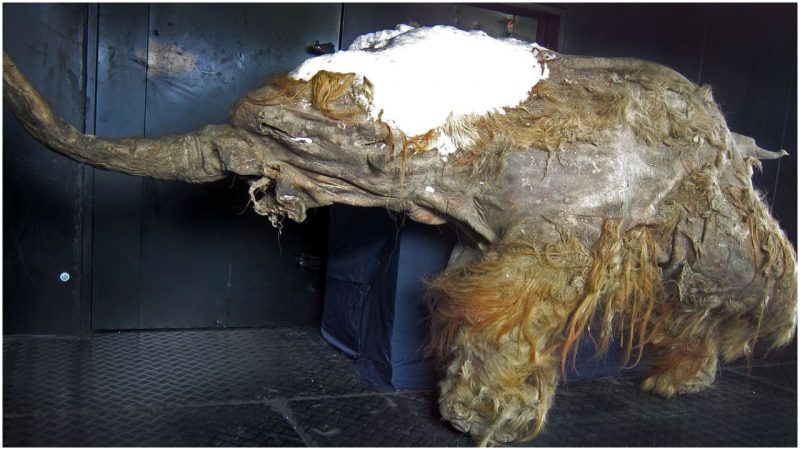Imagine a world untouched by time, where ancient creatures, long thought extinct, suddenly reappear. This isn’t the plot of a science fiction novel, but rather a series of extraordinary historical accounts that have baffled scientists and ignited public imagination for centuries. From a monstrous winged reptile emerging from a French tunnel to salamanders stirring from ancient chalk beds, these tales challenge our understanding of life’s resilience and the secrets hidden within Earth’s geological layers.
The French Pterodactyl: A Jaw-Dropping Discovery in 1856
Our journey into the unbelievable begins in northeastern France in 1856, amidst the rugged mountainous terrain between Saint-Dizier and Nancy. Engineers and explosives experts were tirelessly drilling a railway tunnel when they encountered a formidable obstacle: a massive Jurassic limestone formation. With a thunderous blast of dynamite, the rock split, revealing an astonishing sight.
As the dust settled, workers cautiously approached the shattered debris. What they saw next sent shivers down their spines and forced them to recoil in terror. Before them, a strange, goose-sized black bird stumbled. Its most striking feature was a terrifying beak armed with sharp teeth, and its four limbs ended in prominent claws with glistening, oily membranes between the digits. The creature moved slowly, gasping and moving its beak in the dusty air, before collapsing to the ground, dead.
The deceased creature was swiftly transported to the Natural History Museum in nearby Gray. There, experts made a breathtaking identification: it was a Prehistoric Pterodactyl, an extinct flying reptile. The very rocks from which it emerged dated back an astounding 150 million years, to an era when dinosaurs roamed and these majestic winged reptiles, some with wingspans of up to 50 feet, soared over ancient oceans and swamps in search of sustenance. This discovery, deemed one of the most astonishing in history, became the talk of the newspapers, leaving perplexing questions in its wake: How did it breathe? What did it eat? And how did it withstand the immense pressure within the fossilized limestone layers for millions of years? The answers remain elusive.
Stirrings in the Chalk: Dr. Clarke’s Salamanders
The French pterodactyl was not an isolated incident. A similar, equally baffling story comes from England, recounted by the reputable scientist Dr. Y.D. Clarke of Caius College, Cambridge. While fossil hunting in the chalk layer, his team unearthed a layer of fossilized sea urchins at a depth of 270 feet. Among them were three amphibian newts (salamanders).
Preserved remarkably well in the damp chalk, Dr. Clarke carefully placed the salamanders on paper to dry in the sunlight. To his utter astonishment, within minutes, the small creatures began to stir! Two of them unfortunately perished soon after, but the third survived. Dr. Clarke took the living salamander to a pond to test its response to water. As he placed it in the pond, the creature writhed, then swam away, disappearing into the water, never to be recovered.
Subsequent investigations by Dr. Clarke, who collected and compared contemporary salamander samples with the two deceased specimens from the chalk layer, revealed a startling truth: the salamander he found had no living contemporary equivalent. Furthermore, the esteemed biologist Richard Cobbold from Cambridge University, after personally examining the specimens, confirmed, “They are of an extinct type previously unknown to us.”
Victorian Frog Experiments: Life from the Depths
These astounding discoveries fueled a surge of scientific activity in Victorian England, particularly focusing on the phenomenon of live frogs found within rock strata. In 1862, a local newspaper in Lincolnshire reported the discovery of a frog trapped in a rock layer seven feet below the surface during excavations. Just three years later, another live frog was found 25 feet deep in a rock layer. Its skin initially matched the yellowish-white color of the rock, but it soon transformed to greenish before dying two days later.
These remarkable occurrences prompted scientists to conduct their own “reverse experiments.” Some began burying frogs in mud or glass chambers, unearthing them after a year or more. While some scientists found their frogs deceased, others surprisingly recovered them alive. The Times, on September 23, 1862, reported that a French scientist, after 12 years, successfully retrieved four live frogs out of 20 he had buried deep underground. However, these intriguing studies eventually ceased due to significant ethical criticisms.
The Enduring Mystery: A Living Dinosaur in Stone?
These captivating accounts raise a profound and perhaps audacious question: Is it possible that a massive rock formation could still harbor a live dinosaur, waiting to be accidentally unearthed during a large-scale excavation project? While modern science largely dismisses the possibility of such long-term suspended animation for complex organisms like dinosaurs, these historical anecdotes continue to fuel our wonder and curiosity about the incredible resilience of life and the Earth’s enduring mysteries. They serve as a powerful reminder that even in our modern, technologically advanced world, there are still inexplicable phenomena waiting to be discovered, challenging our preconceptions and pushing the boundaries of what we believe is possible.

